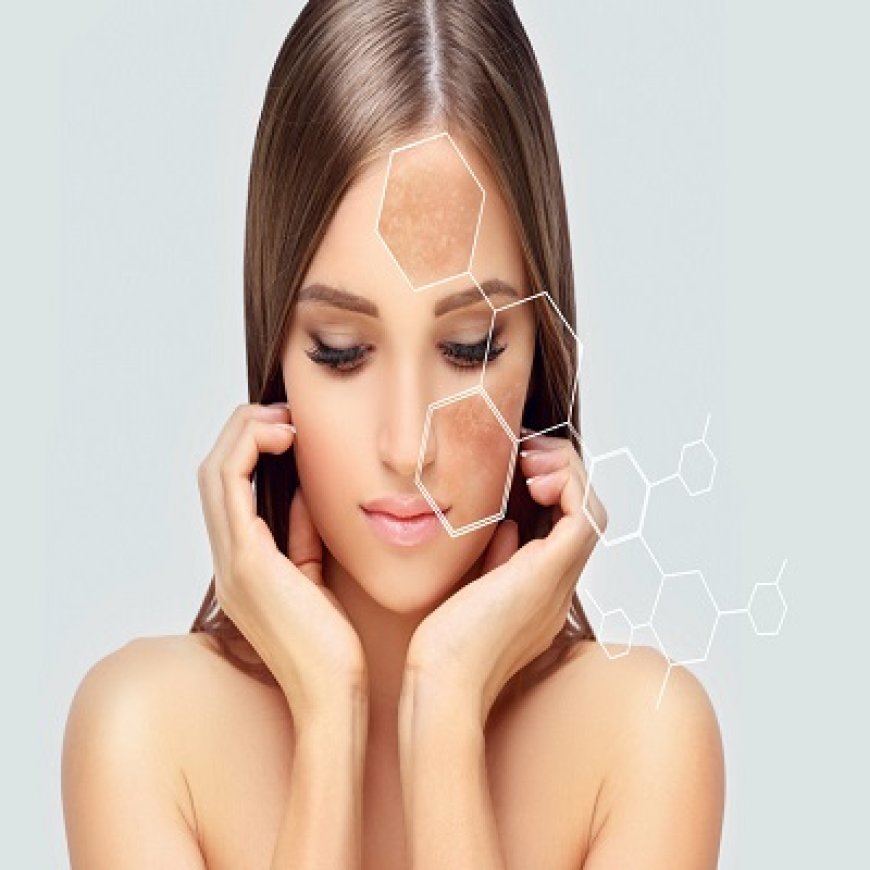Can melasma treatment cause skin irritation or redness?

Melasma is a chronic skin condition that manifests as dark, blotchy patches typically on the face, especially the cheeks, forehead, and upper lip. It is more prevalent in women and is often triggered by hormonal changes, sun exposure, or genetic predisposition. Given its cosmetic impact, various treatments—ranging from topical applications to laser therapies—are available. However, a commonly raised concern among individuals considering such treatments is whether melasma treatment can cause skin irritation or redness. For those undergoing or planning to undergo Melasma Treatment in Islamabad, understanding the potential side effects, including skin sensitivity and redness, is crucial to informed decision-making.
Why Skin Reactivity Occurs During Melasma Treatment
Melasma treatments often involve exfoliation, pigmentation suppression, or deeper penetration into the skin layers. While these mechanisms are effective for reducing hyperpigmentation, they can also temporarily disrupt the skin’s protective barrier. This disruption may result in inflammation, dryness, burning sensations, or visible redness.
The likelihood and severity of these reactions depend on several factors:
-
Type of treatment used
-
Skin sensitivity
-
Application technique
-
Frequency of use
-
Pre-existing skin conditions
While most reactions are mild and self-limiting, some may require medical intervention if they persist or worsen.
Topical Treatments and Skin Irritation
Topical agents are often the first line of treatment for melasma. While generally well-tolerated, certain ingredients can cause irritation, especially when used without medical supervision or if applied excessively.
1. Hydroquinone
Hydroquinone is a melanin-inhibiting compound often prescribed for melasma. Although effective, it can cause:
-
Redness
-
Mild burning
-
Dryness
-
Occasional allergic reactions
These symptoms usually subside with adjusted usage or application of moisturizers, but prolonged irritation may necessitate discontinuation.
2. Tretinoin (Retinoids)
Tretinoin enhances cell turnover, aiding in pigment dispersion. It may cause:
-
Peeling
-
Sensitivity to sunlight
-
Redness
-
Flaking skin
These effects are most pronounced during the initial weeks of use and typically lessen over time as the skin adjusts.
3. Corticosteroids
Used to reduce inflammation in combination treatments, corticosteroids can cause skin thinning and increased sensitivity if used long-term.
4. Azelaic Acid & Kojic Acid
These agents are considered gentler but can still trigger tingling or redness in sensitive individuals.
Chemical Peels and Irritation Risks
Chemical peels involve applying acids like glycolic acid, lactic acid, or trichloroacetic acid to exfoliate the skin's upper layers. While effective in pigment reduction, chemical peels can result in:
-
Immediate redness post-procedure
-
Mild swelling
-
Burning or stinging sensations
-
Skin flaking or peeling
The intensity of these reactions depends on the concentration of the acid used and the depth of the peel. Superficial peels typically cause minimal irritation, while medium-depth peels may require several days of recovery.
Patients should follow post-procedure care instructions strictly, including moisturizing and sun protection, to minimize side effects and aid healing.
Laser Treatments and Potential Redness
Laser therapy has emerged as a promising solution for stubborn melasma, especially when deeper dermal pigmentation is involved. However, it is not without side effects.
Common Lasers for Melasma:
-
Q-switched Nd:YAG laser
-
Fractional laser
-
Intense Pulsed Light (IPL)
Potential Reactions:
-
Redness and mild inflammation immediately after treatment
-
Warmth or a tingling sensation
-
Temporary darkening of spots (a normal part of the healing process)
-
Minor peeling or dryness
These symptoms generally resolve within a few days. However, improper settings or use on unsuitable skin types may increase the risk of adverse effects such as prolonged redness, swelling, or even post-inflammatory hyperpigmentation (PIH).
This is why professional assessment and a patch test are critical before initiating laser therapy for melasma.
Microneedling and Skin Sensitivity
Microneedling creates controlled micro-injuries in the skin to stimulate collagen production and allow better penetration of active ingredients. Post-treatment effects may include:
-
Redness
-
Swelling
-
Mild pinpoint bleeding
-
Temporary skin sensitivity
These are considered normal responses and usually subside within 24 to 48 hours. Proper aftercare, such as using non-comedogenic moisturizers and avoiding sun exposure, helps reduce downtime.
Sun Exposure as a Compounding Factor
One of the most critical yet often overlooked causes of irritation during melasma treatment is inadequate sun protection. Regardless of the type of treatment used, unprotected exposure to UV rays can:
-
Exacerbate redness
-
Delay healing
-
Trigger recurrence of melasma
-
Increase risk of hyperpigmentation
Using a broad-spectrum sunscreen with SPF 50+ is non-negotiable during and after any melasma treatment. It not only prevents additional pigmentation but also reduces the likelihood of irritation.
Managing and Preventing Skin Irritation
While mild irritation is common, it can be managed or prevented by adhering to professional guidelines and choosing treatment modalities tailored to individual skin types. Some effective strategies include:
-
Gradual introduction of topical agents to allow the skin to adapt
-
Using a barrier-repair moisturizer to strengthen the skin's protective layer
-
Avoiding active ingredients like AHA/BHAs or retinoids when irritation is present
-
Following pre- and post-procedure instructions for peels and lasers
-
Avoiding harsh scrubbing or exfoliation during treatment cycles
It's also important to avoid layering multiple active ingredients without guidance, as this can increase the risk of compounded irritation.
When to Consult a Dermatologist
Persistent or worsening redness, swelling, or discomfort should never be ignored. These could be signs of:
-
Allergic reaction
-
Chemical burns
-
Secondary infections
-
Overuse of potent ingredients
A qualified dermatologist can evaluate symptoms, adjust the treatment regimen, and prescribe soothing agents if needed.
Early intervention can prevent complications and help continue the treatment journey safely and effectively.
Conclusion
Melasma treatments, while highly beneficial in reducing pigmentation, may sometimes cause temporary skin irritation or redness. This is often a normal reaction, especially in the early stages of treatment. Understanding the type of treatment used, following expert guidance, and adopting diligent skincare practices can minimize these effects and enhance treatment outcomes.
What's Your Reaction?




























































